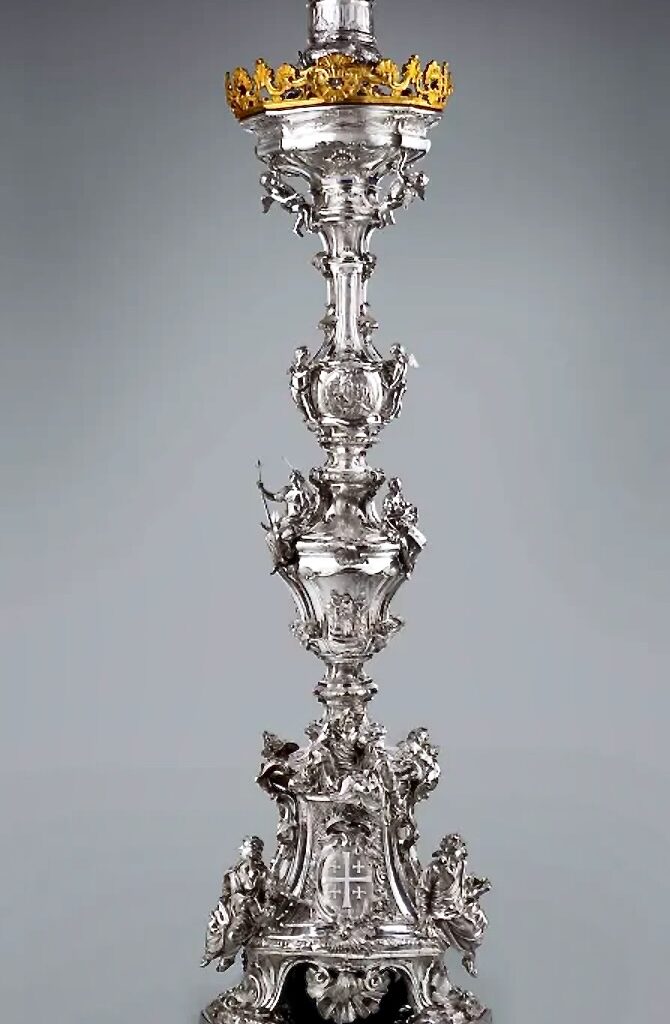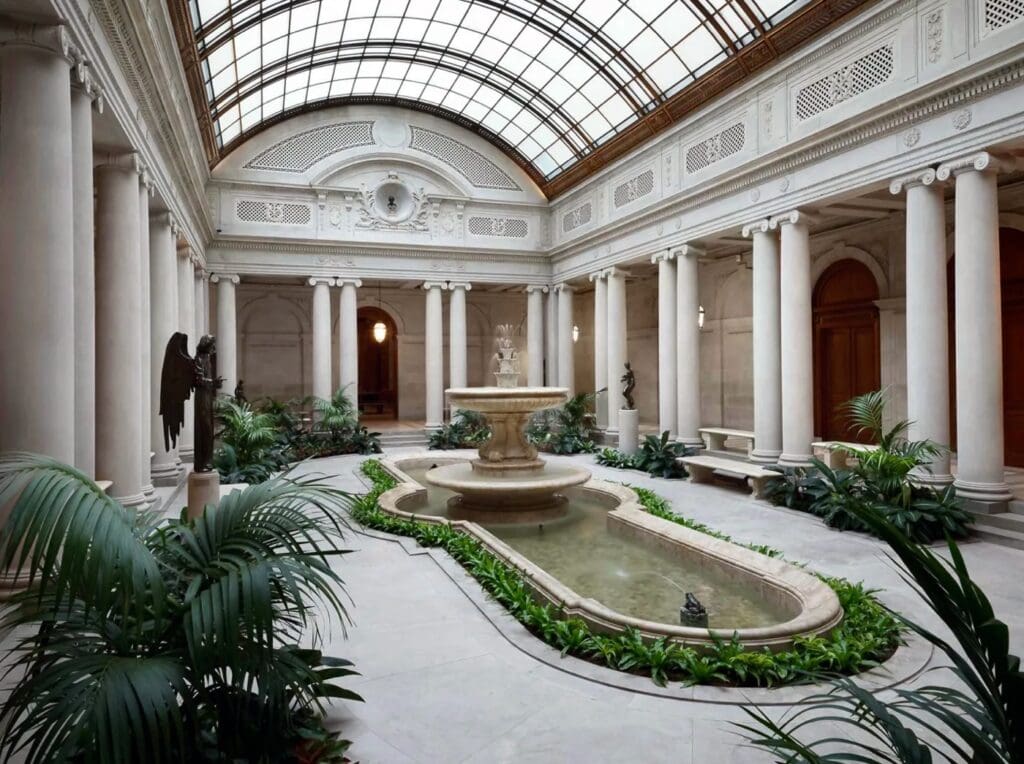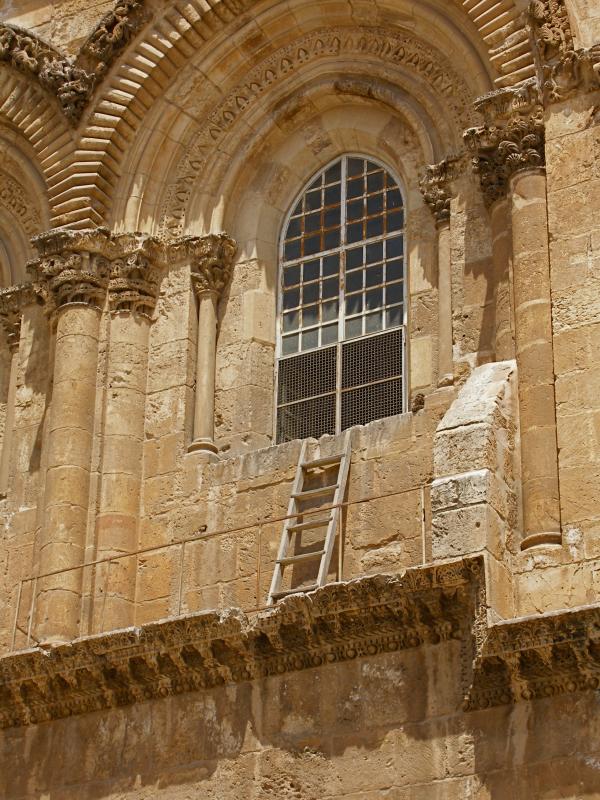There’s a show, To the Holy Sepulcher: Treasures from the Terra Sancta Museum, at the Frick Collection in Manhattan (the entrance is just off 5th Avenue at E. 70th St.). It will run until January 5, 2026, and is well worth seeing.
If you’ve not been to the newly renovated Frick, it’s a treat, although beautiful as the space is, it lacks the elegant charm of the original, which remained very much like the home of the man who built it.
Henry Clay Frick (1849-1919) was a robber baron. At 21, he founded the Frick Coke Company, using what’s called a beehive oven to turn coal into coke, which the company then sold to steelworks. In a decade, having bought out his partners and having received a loan from his friend Andrew Mellon, he launched H.C. Frick & Company. The next year, he formed a partnership with Andrew Carnegie. After some bitterness, that would lead to lawsuits and settlements.
To have a place to relax and fish, Frick and some other rich men bought Lake Conemaugh, a reservoir that was supported by the earthenwork South Fork Dam just above Johnstown, Pennsylvania. They lowered the level of the dam by 3 feet for better transit in and out of the area. On Friday, May 31, 1889, a torrential rainstorm caused the dam to overflow and collapse, sending nearly 4 billion gallons of water flooding into Johnstown and killing more than 2200 people. Frick was never sued, but he did donate “thousands of dollars” to help with Johnstown’s recovery.
As one poet put it at the time, “All the horrors that hell could wish, / Such was the price that was paid for – fish!”
Needless to say, all these years later, the Frick Collection is free of any taint of Mr. Frick’s union- or dam-busting activities. And although I’m unsure how much credit he deserves for his art acquisitions – for which he employed the advisory services of notable art experts – the man did know what he liked. He would have agreed with Oscar Wilde: “I have the simplest tastes. I am always satisfied with the best.”
Before turning to the Holy Sepulcher exhibit, I must mention that, for me, the Frick’s highlight is the counterpointing of Hans Holbein the Younger’s portraits of Sir Thomas More (1527) and Thomas Cromwell (c. 1532–33) on either side of the fireplace in the Living Hall. And over the fireplace is El Greco’s St. Jerome (1590–1600). And, my goodness, the Frick has three Vermeers!
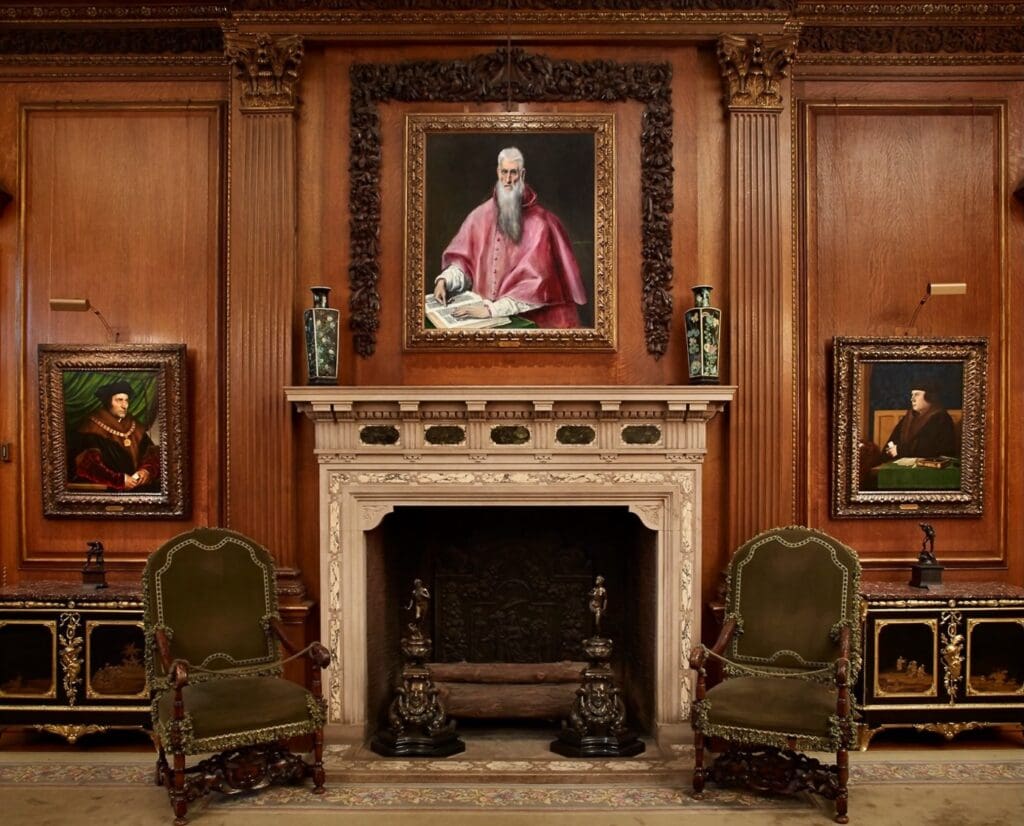 The Living Hall (l-r, St. Thomas More, St. Jerome, and Cromwell
The Living Hall (l-r, St. Thomas More, St. Jerome, and Cromwell
To the Holy Sepulcher: Treasures from the Terra Sancta Museum is a small exhibit with a big impact. As with all great stories of art and archaeology, there is mystery, as well as history, involved.
The gist is this: After the Crusades, Franciscans came to the Holy Land, and one group of them took charge of the Church of the Holy Sepulcher. Obviously, it’s a long and complicated history – from the Resurrection to St. Helena’s building of a church at the site – but the Franciscans founded the Custodia Terræ Sanctæ. Indeed, it was begun by Saint Francis himself in 1217. That Custodia (“Custody” in English) is now shared by Catholic and Orthodox communities.
But as Alvar González-Palacios writes in the Frick exhibition catalog, much of what is held in custody by Franciscans and others was, until recently, unavailable to the public. His story of gaining entrance to Jerusalem’s St. Savior Monastery and its treasures 45 years ago, while not exactly Indiana Jones-worthy, reveals why it was important to launch the coordinated Terra Sancta Museum project.
As the Frick explains about the current show:
This groundbreaking exhibition presents more than forty rare objects from the Church of the Holy Sepulcher. Largely unknown to the public until their recent rediscovery, the opulent works range from liturgical objects in gem-encrusted gold and silver to richly decorated vestments in velvet, damask, and other luxurious materials. These treasures were donated by European Catholic monarchs and Holy Roman Emperors in the seventeenth and eighteenth centuries to the church in Jerusalem, the religious center of the Christian faith, and have been safeguarded and used ever since by the Franciscan friars who maintain the site.
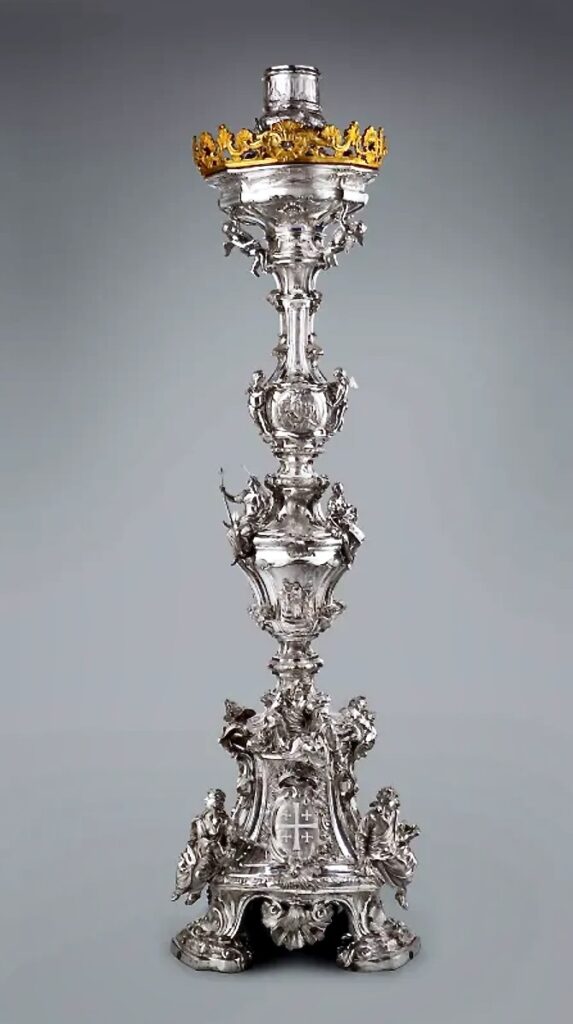 One of the tall Venetian torchères, 1762
One of the tall Venetian torchères, 1762
My own favorite among the treasures is the pair of torchères that flank an impressive altar. The word candlesticks hardly does justice to these massive silver masterpieces (true, too, of the photo above). Each is 8 feet tall and was made in the Al San Lorenzo Giustinian Workshop in Venice during the middle of the 18th century. And they come with their own bit of historical gossip.
The relationships among Christians in the Holy Land have not always been amicable: “After the Greek Orthodox clergy ransacked the Holy Sepulcher, on April 2, 1757, the Custody managed to recover a number of damaged objects and bought back others that had been stolen.” Some of the silver was subsequently used to create the torchères.
To this day, there are disputes among Catholic and Orthodox – some serious, others not. In this latter category is the so-called Immovable Ladder at the Church of the Holy Sepulcher. Placed there at least as early as the 1700s, it is “immovable” because the various Christian groups mentioned cannot agree on who put the ladder there. Likely it was just a workman. But of which sect? As Atlas Obscura explains: “The ladder remains there to this date. No one dares touch it, lest they disturb the status quo, and provoke the wrath of others.”
To watch a 6-minute video about the Frick, narrated by comedian Steve Martin, click here.

